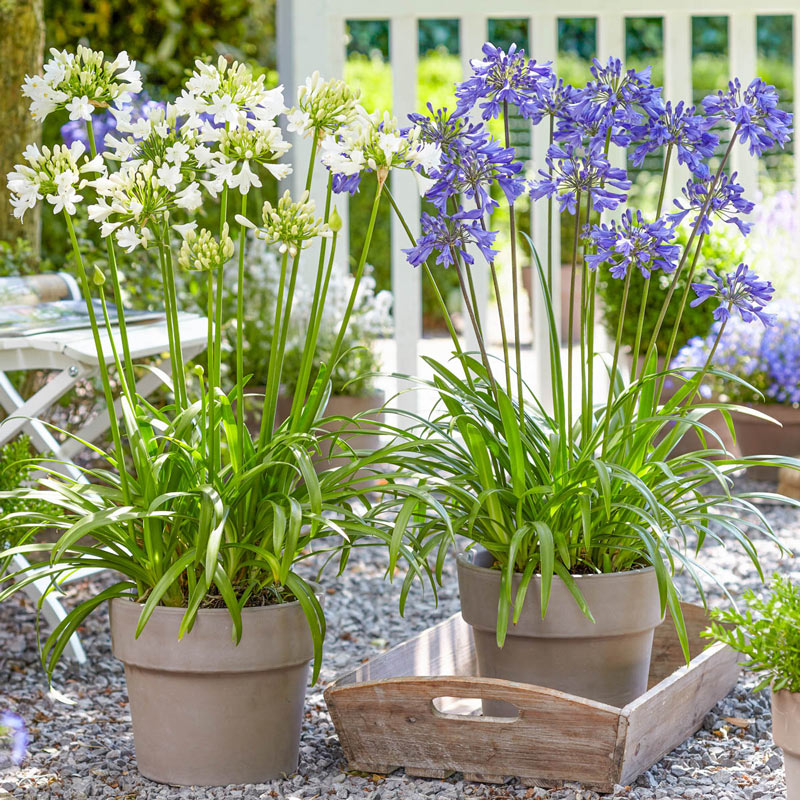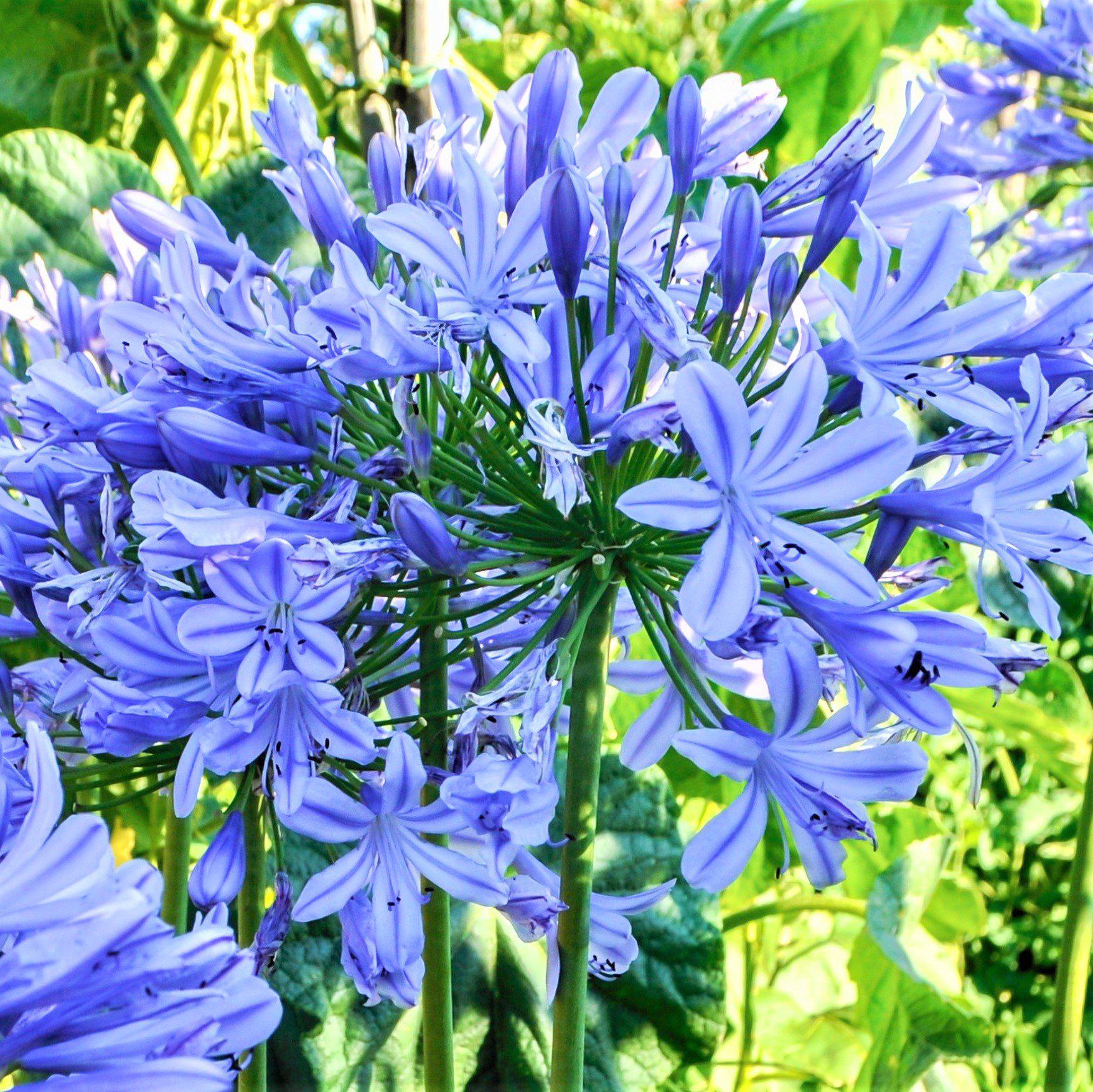Agapanthus Expanding Conditions: Dirt, Sunlight, and Watering
Agapanthus Expanding Conditions: Dirt, Sunlight, and Watering
Blog Article
Unleashing the Secret to Successful Agapanthus Farming: Idea for a Flourishing Yard
In the realm of gardening, growing agapanthus efficiently requires a critical technique that includes various elements of plant care. By understanding the nuances of agapanthus farming, one can develop an atmosphere where these plants thrive and flower abundantly.
Planting Agapanthus: Best Practices
When growing Agapanthus, proper soil preparation is vital for making sure effective growth and advancement of these stunning blossoms. Agapanthus, typically referred to as Lily of the Nile or African lily, flourishes in well-draining soil with a slightly acidic to neutral pH degree - Agapanthus. Before planting, it is vital to amend hefty clay dirts with raw material such as compost or peat moss to boost drain and give vital nutrients for the plants
To plant Agapanthus, select a location that receives complete sunlight to partial color, as this will certainly promote healthy development and plentiful blooming. Dig an opening two times the size of the plant's root round and place the Agapanthus at the exact same deepness it was previously growing. Carefully backfill the hole with dirt, pushing down firmly to remove any air pockets around the roots.
Water the recently grown Agapanthus completely and continue to keep the soil equally moist, especially during the plant's energetic growing season. Agapanthus. Applying a balanced fertilizer once a month can even more sustain the plant's development and blooming. By following these finest practices for growing Agapanthus, you can develop a stunning display screen of these exciting blossoms in your garden
Suitable Dirt Issues for Agapanthus
For ideal development and growing success of Agapanthus plants, ensuring the dirt problems are suitable is critical. Agapanthus flourishes in well-draining soil with a somewhat acidic to neutral pH degree varying from 6.0 to 7.0. This kind of dirt enables for sufficient water drainage, stopping waterlogging which can lead to root rot. To boost soil water drainage, consider adding raw material such as compost or peat moss when preparing the planting website. Additionally, Agapanthus likes soil that is abundant in nutrients, so including a balanced plant food during the growing season can promote healthy and balanced growth and vibrant blossoms.

Watering and Fertilizing Tips
To guarantee healthy development and lively blossoms, correct watering and fertilizing methods are vital for successful Agapanthus growing. Agapanthus plants benefit from regular watering, particularly throughout the growing period.
When it pertains to fertilizing Agapanthus, a well balanced fertilizer with equivalent parts nitrogen, phosphorus, and potassium can be used in the springtime to advertise healthy development and flowering. Slow-release fertilizers are suitable for giving nutrients progressively over an extended period. Prevent over-fertilizing, as this can lead article to excessive vegetation growth at the expense of flowers.
Additionally, integrating raw material like garden compost right into the soil can enhance nutrient degrees and boost soil structure, helping in the overall health of the Agapanthus plants. By complying with these watering and fertilizing tips, gardeners can ensure their Agapanthus plants prosper and generate stunning displays of blossoms.
Pruning and Deadheading Techniques
Proper pruning and deadheading methods play a crucial duty in preserving the wellness and aesthetic appeals of Agapanthus plants, matching the crucial techniques of watering and feeding for successful growing. Trimming Agapanthus entails removing spent flower heads, yellowing or dead fallen leaves, and general shaping of the plant to advertise much better development. Deadheading, the procedure of eliminating faded flowers, not only boosts the plant's appearance but likewise encourages more growing.
When deadheading Agapanthus, it is recommended to snip off the flower stem at the base using sharp, tidy shears. This procedure redirects the plant's power from seed manufacturing back right into origin and vegetation growth, advertising a healthier and a lot more durable plant. Routine deadheading can prolong the growing period of Agapanthus and stop self-seeding, which can cause overcrowding.
In regards to trimming, Agapanthus usually take advantage of a light trim after blooming to clean the plant and motivate fresh development. Reducing back the spent flower stems and getting rid of any damaged or dead foliage assists preserve the plant's vigor and total look. Nevertheless, it is vital to stay clear of cutting right into the crown of the plant, as this can damage its wellness.

Protecting Agapanthus From Vermins and Diseases
Applying effective pest and condition administration techniques is crucial to securing the health and vigor of Agapanthus plants in farming. Agapanthus are usually durable plants, yet they can still come down with different click now bugs and illness otherwise correctly taken care of. One common bug that influences Agapanthus is the Agapanthus borer, a caterpillar that tunnels into the plant, causing damage to the flowers and leaves. To stop invasions, regular examination of the plants is vital. If borers are discovered, they can be manually gotten rid of, or insecticidal soap can be utilized as a control action.
In enhancement to parasites, Agapanthus are vulnerable to conditions such as root rot and fungal leaf areas. have a peek at this site By remaining alert and addressing insect and illness concerns quickly, garden enthusiasts can aid their Agapanthus grow and grow.

Verdict
Finally, successful cultivation of agapanthus calls for appropriate growing methods, perfect dirt conditions, adequate watering and feeding, regular pruning and deadheading, and protection from pests and diseases. By complying with these techniques and pointers, gardeners can make certain a prospering yard filled up with beautiful agapanthus flowers. Agapanthus. Keep in mind to preserve consistent care and attention to information to promote the health and longevity of these stunning plants
When growing Agapanthus, appropriate dirt preparation is crucial for making sure successful development and advancement of these stunning blossoms.Water the newly grown Agapanthus completely and proceed to maintain the soil uniformly damp, specifically throughout the plant's active growing season.For optimum growth and growing success of Agapanthus plants, guaranteeing the dirt problems are ideal is essential. When transplanting or growing Agapanthus, guarantee the dirt is well-prepared to offer the needed structure for the plants to establish themselves successfully. One common pest that influences Agapanthus is the Agapanthus borer, a caterpillar that tunnels into the plant, creating damages to the leaves and flowers.
Report this page